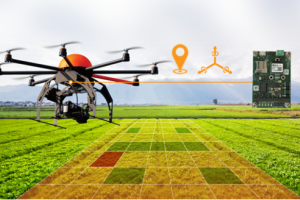Compact GPS/GNSS receiver for UAVs unveiled with on-board IMU sensor

Septentrio, a specialist in high-precision GNSS positioning solutions, has unveiled a new GNSS*/INS receiver, AsteRx-i D UAS. This multi-frequency receiver is said to combine reliable centimetre-level positioning with 3D orientation, enabling automated navigation of aerial drones and robots.
With a high-performance IMU (Inertial Measurement Unit) from Analog Devices integrated directly into the receiver board, AsteRx-i D UAS is designed to be compact and lightweight. Aboard the drone, its small form-factor combined with exceptionally low power consumption results in extended battery life and longer flight times.
“With this product we introduce into our inertial-GNSS portfolio an IMU which allows us to reduce the weight and power consumption of our UAS boards while making them easier to integrate. These are all key elements for a successful UAV platform,” says a spokesperson.
AsteRx-i D UAS is the first commercial product resulting from Septentrio’s collaboration with Analog Devices, delivering robust positioning and attitude (heading, pitch and roll) in demanding industrial environments. Both single antenna and dual antenna versions are available. The single antenna version provides a lightweight solution optimizing the system SWaP (size, weight and power). The dual antenna version is ideal for machines that need reliable heading directly from the start.
AsteRx-i D UAS comes with Advanced Interference Mitigation (AIM+) technology. In aerial drones, where many electronics are crammed into a small space, neighboring devices can emit electromagnetic radiation, interfering with GNSS signals. AIM+ offers protection against such interference resulting in faster set-up times and robust continuous operation. The on-board IMU from Analog Devices is exceptionally robust against mechanical vibrations. This IMU combined with Septentrio’s anti-shock LOCK+ technology makes AsteRx-i D UAS resilient against impact during takeoff and landing.
For more information click here.
Comment on this article below or via Twitter@IoTGN
